38 minerals on food labels
Understanding Food Labels - Nutrition: Science and Everyday Application ... The FDA uses the following definitions for interpreting the %DV on food labels:4 5%DV or less means the food is low in a nutrient. 10% to 19%DV means the food is a "good source" of a nutrient. 20%DV or greater means the food is high in a nutrient. Advantages of Food Labels. Information about ingredients. Information about the nutrition values. May raise the awareness of people regarding their diet. May motivate people to eat healthier. Information regarding portion sizes. Helpful information for people suffering from diseases. Crucial for allergy sufferers.
FDA (US) Nutrition Label Rounding Rules - ReciPal A summary of the FDA's nutrition label rounding rules . But Wait, There's More - Quantitative Vitamin Rounding. When the FDA updated its rules in 2016, it decided to add a requirement to show an actual amount (in mg or mcg) for the mandatory vitamins and minerals in the panel (Vitamin D, Potassium, Calcium, and Iron) as well as for any optional ones like Vitamins A and C, Folate, Zinc, etc.

Minerals on food labels
Food Labels: Fat & Cholesterol | Home & Garden Information Center Quick Guide to % DV makes it easy to choose foods. It tells you that 5% DV or less of a nutrient is low, and 20% DV or more is high. For all nutrients that you want to limit (e.g., total fat, saturated fat, trans fat, cholesterol and sodium), choose foods often that contain 5% DV or less of these nutrients. Food Labels | Nutrition.gov Folate and Folic Acid on the Nutrition and Supplement Facts Labels HHS, Food and Drug Administration, Center for Food Safety and Applied Nutrition Learn what common foods are natural sources of the vitamin folate, plus what foods may have folic acid added during processing. Interactive Nutrition Facts Label HHS, Food and Drug Administration Vitamin, mineral daily requirements and good food sources -- Harvard ... RDAs, food sources for selected vitamins and minerals October 1, 2013 Recommended Dietary Allowances (RDAs) for selected nutrients commonly displayed on food labels
Minerals on food labels. Minerals (for Kids) - Nemours KidsHealth Calcium is the top mineral when it comes to your bones. This mineral helps build strong bones, so you can do everything from standing up straight to scoring that winning goal. It also helps build strong, healthy teeth, for chomping on tasty food. Which foods are rich in calcium? dairy products, such as milk, cheese, and yogurt 15 Essential Minerals (and the Best Sources) - Nutrition Advance Major minerals include calcium, chloride, magnesium, phosphorus, potassium, and sodium. In contrast, humans only need trace minerals in small (<100 mg/day) amounts. Trace minerals include chromium, cobalt, copper, iodine, iron, manganese, molybdenum, selenium, and zinc. This article provides a guide to these essential minerals alongside their ... New Food Label Spotlight: Vitamins and Minerals In the updated label, that same section will jettison vitamin A and vitamin C (the FDA asserts, "In the early 1990's, American diets lacked Vitamins A and C, but now Vitamins A and C deficiencies in the general population are rare"), replacing them with vitamin D and potassium. Calcium and iron will remain on the label. Where are the vitamins and minerals on a nutrition labels? The Nutrition Facts label may include the following 14 minerals: Calcium, chloride, chromium, copper, iodine, iron, magnesium, manganese, molybdenum, phosphorus, potassium, selenium, sodium, and zinc are some of the minerals found in the human body. On a nutrition label, how are ingredients listed?
Hidden Dangers Of Food Labels Women s Health Network Food labels are not required to disclose genetically modified ingredients. Some food products are labeled GMO-free to help consumers make informed choices. Why nutrition facts are misleading. ... And specific vitamins and minerals present insignificant amounts (meaning, more than 1% by weight of the total) are listed at the bottom. ... Changes to the Nutrition Facts Label | FDA - U.S. Food and Drug ... The updated label appears on the majority of food packages. Manufacturers with $10 million or more in annual sales were required to update their labels by January 1, 2020; manufacturers with less ... Food Labels | CDC - Centers for Disease Control and Prevention In general, eat more foods that are higher in vitamins, minerals (such as calcium and iron), and fiber. Eat fewer foods that are higher in added sugars, saturated fat, and sodium (salt), and avoid trans fat. Keep in mind that the % Daily Value of each nutrient, such as total fat of 10% in the example below, is based on eating 2,000 calories a day. FDA Rounding Rules for Your Food Label - LabelCalc 10% or less of the RDI for any vitamins or minerals, round to the nearest 2% increment (i.e. 5 rounds to 6). Between 10% and 50% of the RDI for any vitamins or minerals, round to the nearest 5% increment (i.e. 23 rounds to 25). 50% or higher of the RDI for any vitamins or minerals, round to the nearest 10% increment (i.e. 106 rounds to 110).
Nutrition Facts Labeling — FDA Reader Macronutrients & Minerals (In order) Calcium Iron Phosphorus Iodine Magnesium Zinc Selenium Copper Manganese Chromium Molybdenum Chloride Potassium Vitamins and minerals must appear in the label if: They appear in a serving of the product When they are added as a nutrient supplement When a claim is made about them Food Labels (for Teens) - Nemours KidsHealth Some important vitamins and minerals are included on the Nutrition Facts label: Vitamin D is needed to absorb calcium to build bones and keep them strong. It also plays a part in heart health and fighting infection. Calcium is needed for strong bones. It keeps nerves and muscles working and the heart healthy. Food Labels - Children's Minnesota Some important vitamins and minerals are included on the Nutrition Facts label: Vitamin D is needed to absorb calcium to build bones and keep them strong. It also plays a part in heart health and fighting infection. Calcium is needed for strong bones. It keeps nerves and muscles working and the heart healthy. How to Read Supplement Labels Like a Pro - Healthline Ingredients. When selecting a supplement, reading the ingredient label is key. Check carefully for ingredients like fillers, sweeteners, preservatives, and additives, all of which will be listed ...
How to Understand and Use the Nutrition Facts Label | FDA - U.S. Food ... Dietary fiber, vitamin D, calcium, iron ad potassium are nutrients on the label that Americans generally do not get the recommended amount of. They are identified as nutrients to get more of....
Vitamins and Minerals | Nutrition.gov Interactive Food Label: Vitamins and Minerals. HHS, Food and Drug Administration, Center for Food Safety and Applied Nutrition. How can the Nutrition Facts label help you to choose foods rich in vitamins and minerals? Use this interactive resource to find out! Vitamins and Minerals Chart ...
How Food Labels Show Minerals and Carbohydrates Potassium follows Sodium on the Nutrition Facts label and is essential to life. Potassium has many functions in our body. Among the most important are: Maintains fluid balance Controls electrical activity of the heart and other muscles Maintains optimal blood pressure by counteracting the effects of sodium Maintains acid to base balance
Understanding Nutrition Facts on Food Labels - WebMD Serving Size: An Important Part of Food Labels. At the top of the Nutrition Facts section, you'll see the serving size (such as 1/2 cup, five crackers, or 10 chips) and servings per container (such as two, four, six). The food label then lists the number of calories, grams of fat, grams of saturated and trans fat, etc., per serving.
How To Read Food and Beverage Labels - National Institute on Aging Or you can call the U.S. Department of Agriculture's Food and Nutrition Information Center at 301-504-5414. Understanding percent Daily Value (% DV) The percent Daily Value (% DV) tells how much a nutrient in a serving of the food or beverage contributes to a total daily 2,000-calorie diet.
List of Minerals in Foods A list of minerals in foods may not necessarily include all of the minerals needed for health and wellness. There are 14 considered in the list below. These 14 minerals are divided into two types: Macro minerals and trace minerals. A mineral is considered a macro mineral if your body requires over 100 mg of that particular element.
Food Labels Flashcards | Quizlet Start studying Food Labels. Learn vocabulary, terms, and more with flashcards, games, and other study tools. ... and iron lost when grains are refined (ex: rice; amount of vitamins or minerals added must be listed on the food labels) Fortified. addition of one or more vitamins and/or minerals to a food product (amount of vitamins or minerals ...
Food labeling: MedlinePlus Medical Encyclopedia VITAMINS AND MINERALS Vitamin D, calcium, iron, and potassium are the only micronutrients required to be on the food label. Food companies can voluntarily list other vitamins and minerals in the food. PERCENT DAILY VALUE (% Daily Value) Many nutrients include a percent daily value (%DV).
Pet Food Labels - Pet Food Institute The pet food label lists ingredients in descending order by weight, as is required by the U.S. Food and Drug Administration (FDA). Vitamins and minerals are required to include their chemical name, however you may also see the more recognized or common name; for example, Pyridoxine hydrochloride (vitamin B6) and Thiamine mononitrate (vitamin B1).
Understanding Food Labels - The Nutrition Source Under the Food Allergen Labeling and Consumer Protection Act of 2004, eight major food allergens—milk, fish, tree nuts, peanuts, shellfish, wheat, eggs, and soybeans—are required to be listed in a "contains" statement near the Ingredients list if present in a food. An example would be "contains wheat, milk, and soy."
Minerals In Food - Definition, Types, Sources and Examples - BYJUS There are many examples of minerals in food; these include: Calcium Phosphorus Potassium Sodium Iodine Iron Magnesium The body also requires other minerals in trace amounts such as selenium, cobalt and molybdenum. These elements are known to have a specific function in the human body. Types of Minerals in Food
How To Read Food Labels: Understanding the Basics - Instacart Other nutritional items commonly listed on food labels include cholesterol, sodium, and key vitamins and minerals such as iron, calcium, and vitamin C. Use the daily value percentage to identify the key nutrients contained within a product. In general, look for balance in your diet.
Vitamin, mineral daily requirements and good food sources -- Harvard ... RDAs, food sources for selected vitamins and minerals October 1, 2013 Recommended Dietary Allowances (RDAs) for selected nutrients commonly displayed on food labels
Food Labels | Nutrition.gov Folate and Folic Acid on the Nutrition and Supplement Facts Labels HHS, Food and Drug Administration, Center for Food Safety and Applied Nutrition Learn what common foods are natural sources of the vitamin folate, plus what foods may have folic acid added during processing. Interactive Nutrition Facts Label HHS, Food and Drug Administration
Food Labels: Fat & Cholesterol | Home & Garden Information Center Quick Guide to % DV makes it easy to choose foods. It tells you that 5% DV or less of a nutrient is low, and 20% DV or more is high. For all nutrients that you want to limit (e.g., total fat, saturated fat, trans fat, cholesterol and sodium), choose foods often that contain 5% DV or less of these nutrients.

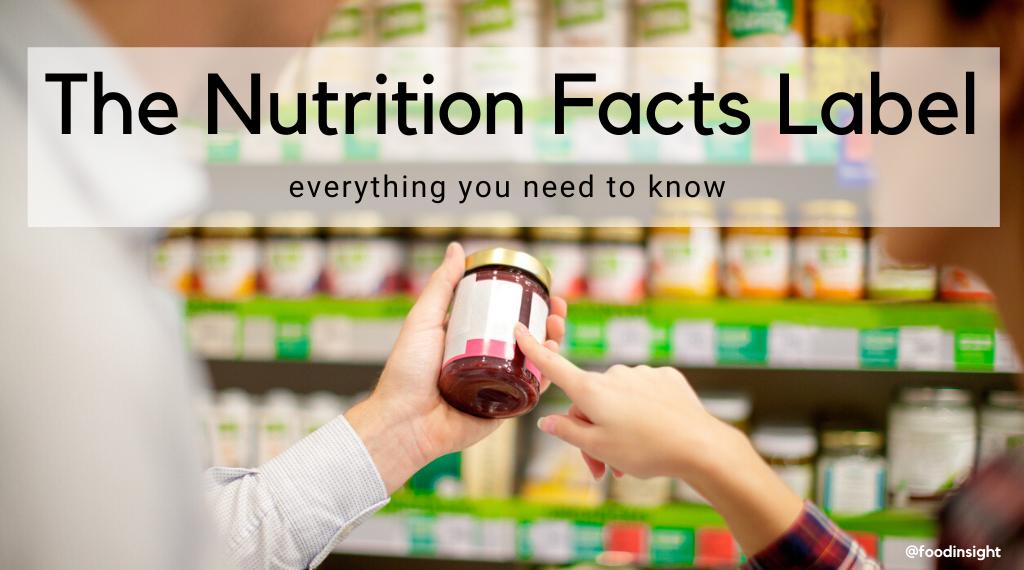

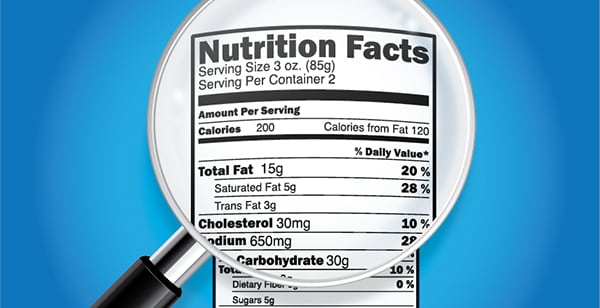

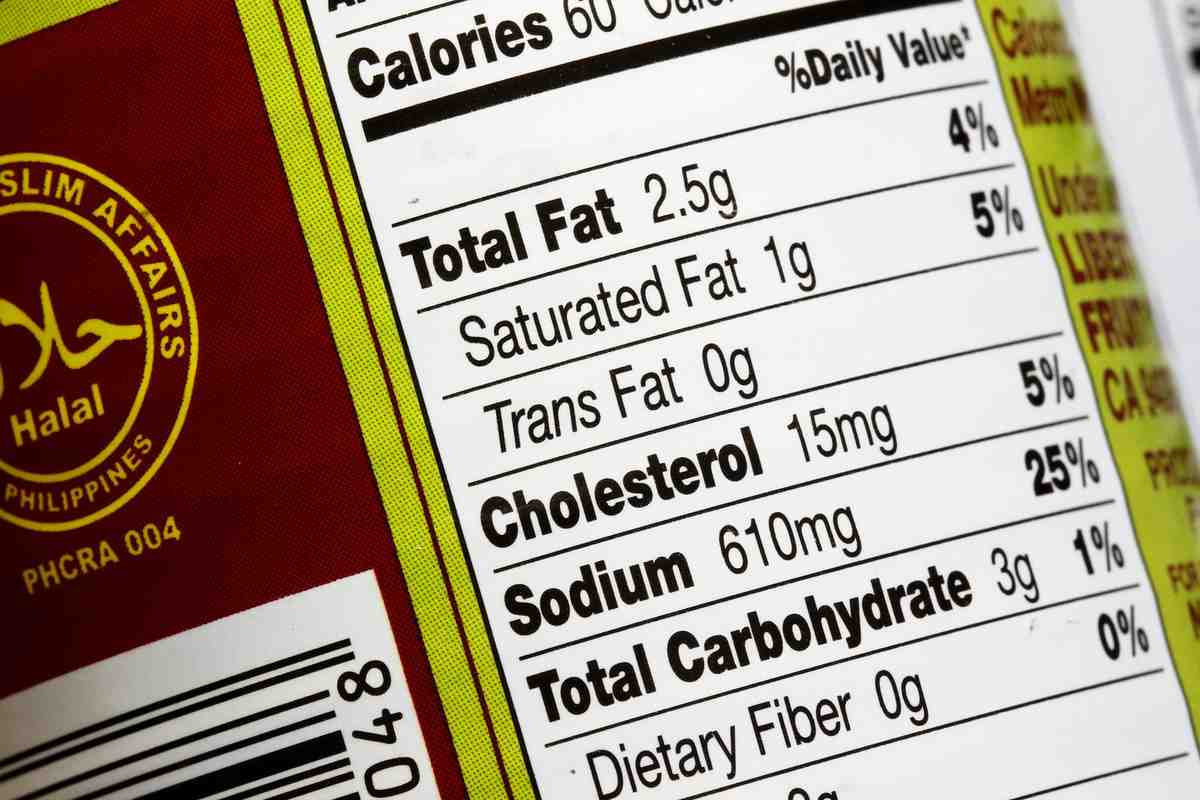
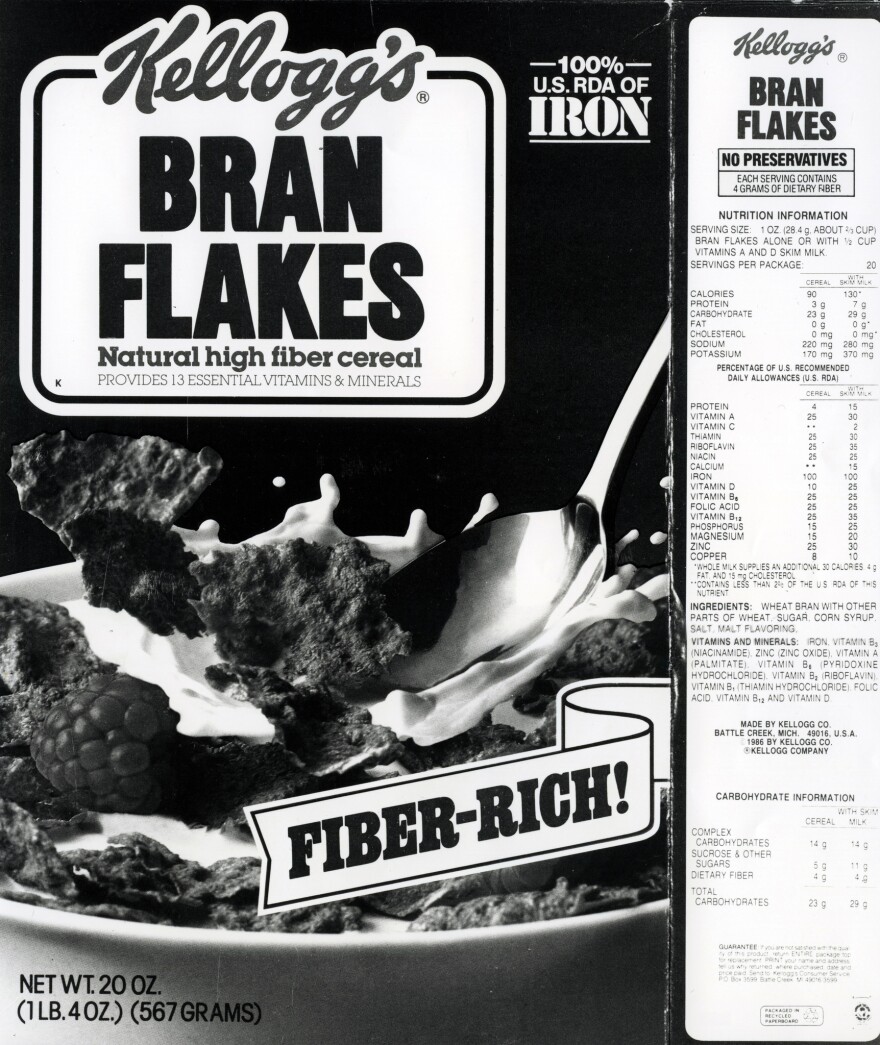


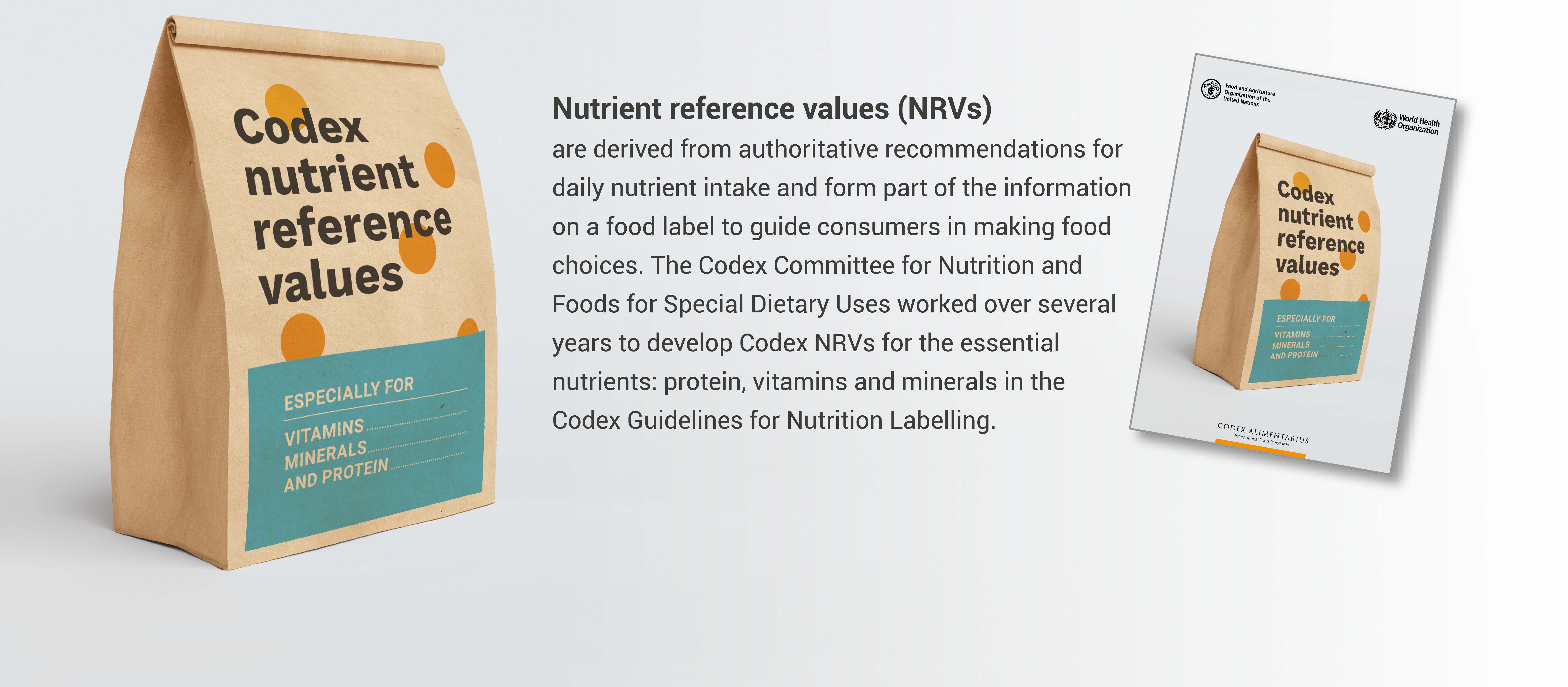
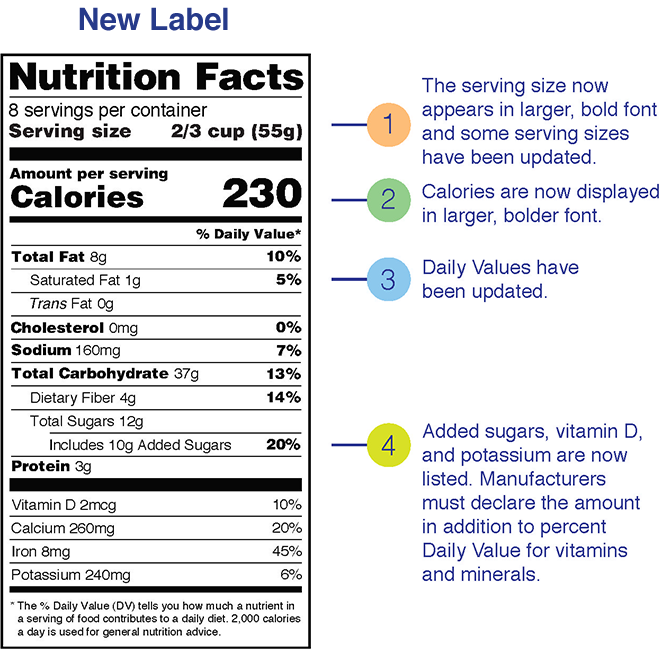
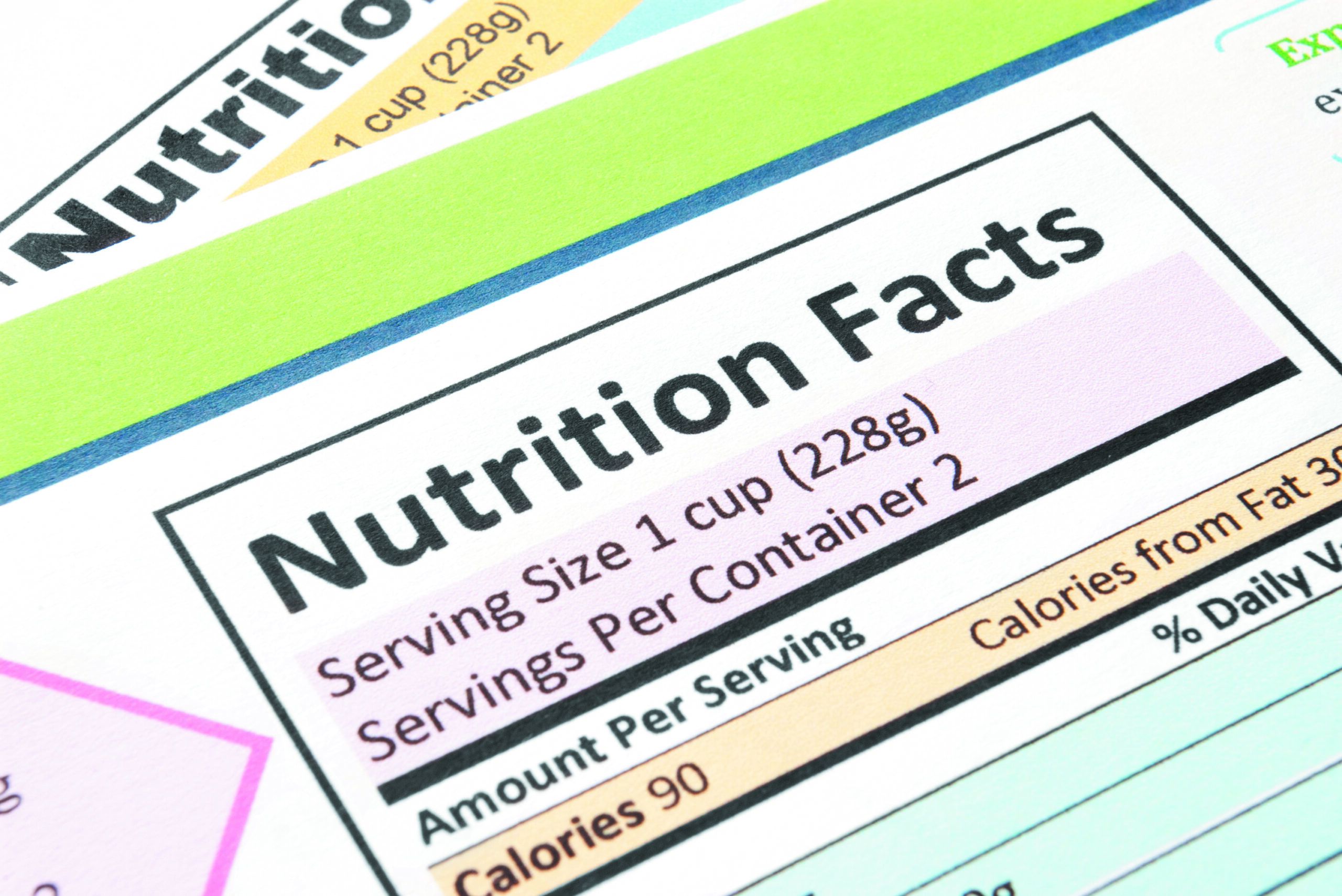






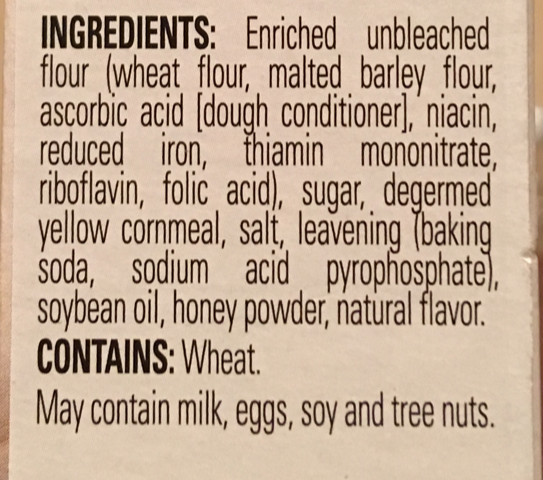
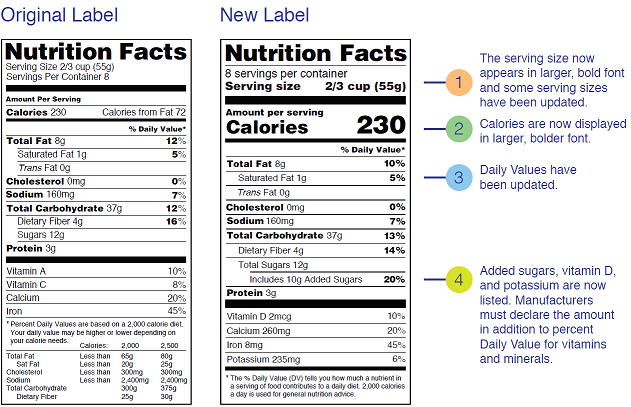

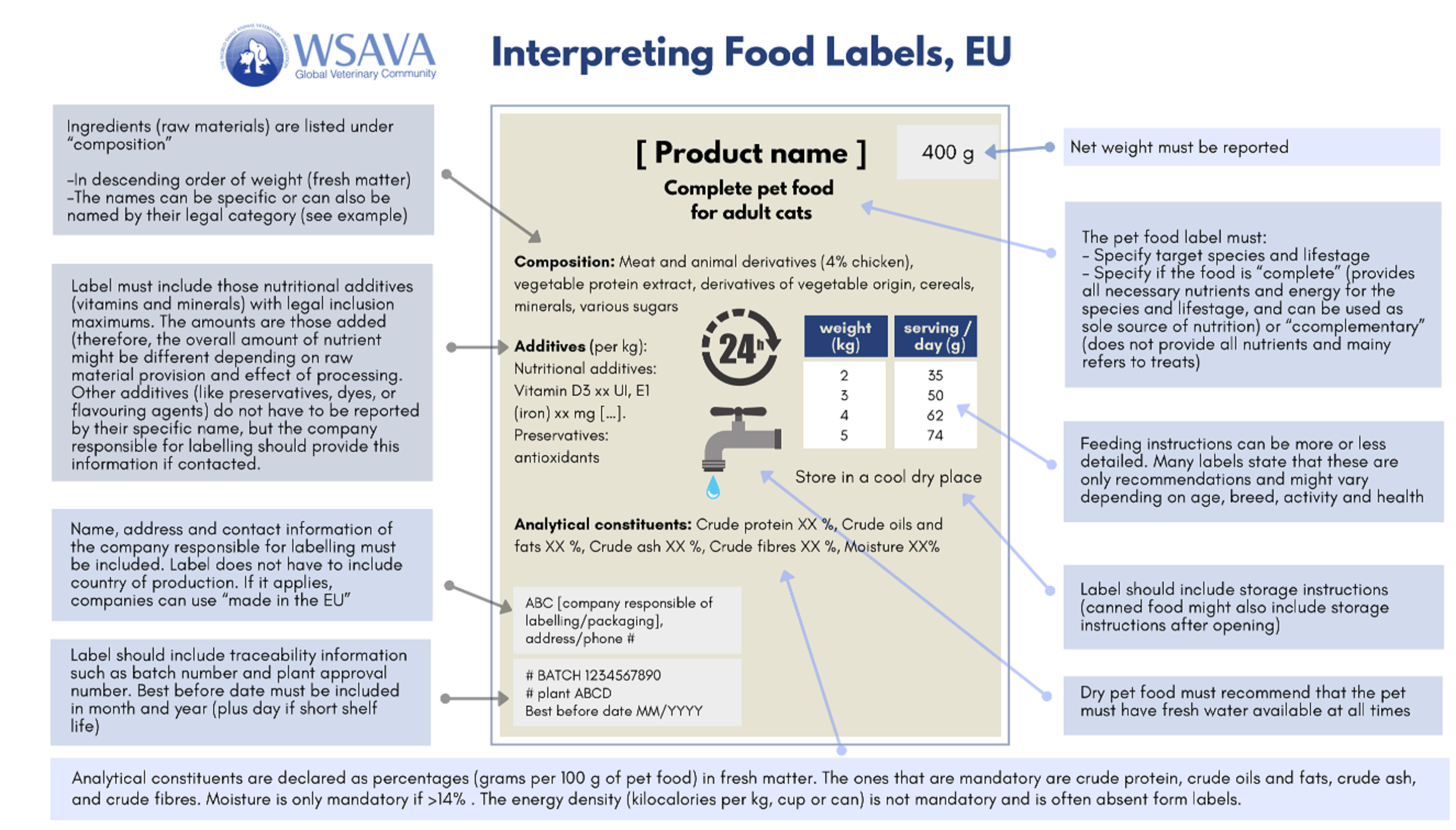

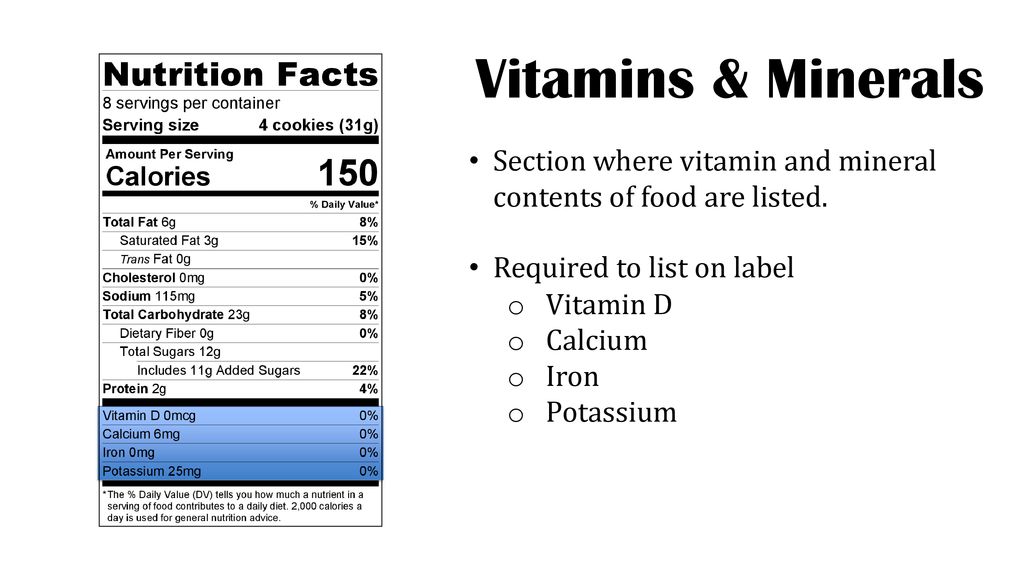

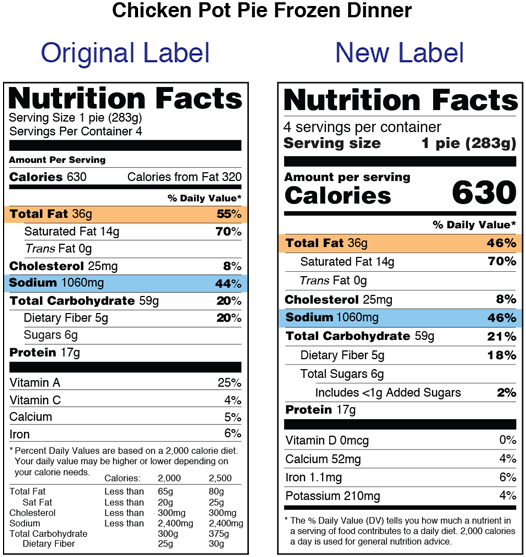







:max_bytes(150000):strip_icc()/Screen-Shot-2017-01-26-at-12.37.37-PM-588a34b83df78caebced9824.png)
Post a Comment for "38 minerals on food labels"